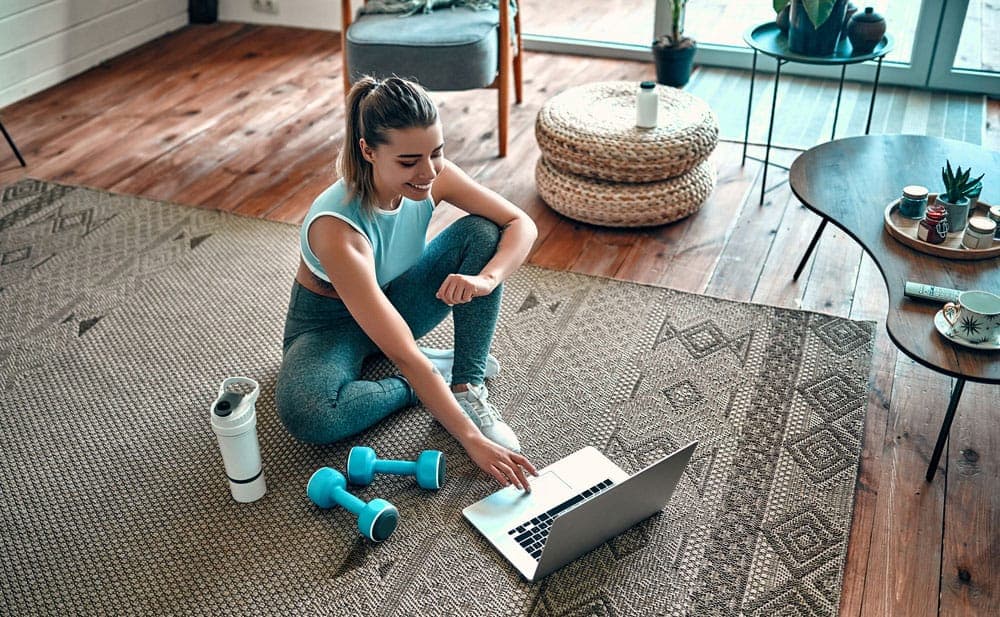Workout Routine: Build a Workout Program to Hit Your Goals
This guide will help you craft the perfect workout routine. Understand why routines are important in fitness and tailor your own perfect workout.
When you step foot in the gym, do you find yourself floundering around, wandering from machine to machine aimlessly with no set workout routine?
Maybe you’ve come in to train legs, but all the machines were occupied so you threw in some bicep curl sets.
Perhaps you got easily distracted by the medicine balls on the floor and deviated from your workout plan for some fun to switch things up.
Or maybe, just maybe, you came in with no plan at all and are feeling totally lost. In this case, it’s easy to leave the gym in defeat, not having gotten in the workout that you hoped. Maybe you left the gym hanging your head in despair since it barely feels like you worked out at all.
If this is you, listen up.
Do you struggle to create a workout plan of action and stick to it?
Although getting in some exercise is better than doing nothing, the deciding factor that makes all the difference between progressing on your fitness journey and staying stuck where you are is structure.
Building a workout routine can feel challenging, but it’s oh so rewarding once you finally start to see those gains coming through as a result of your hard and consistent effort.
Let’s take a look at some of the best workout routines and structures. Here’s we’ll teach you a few methods and provide tips on how you can plan a workout routine that suits your lifestyle, time constraints and fitness goals.
Workout Routine for Beginners
If you’re a newbie to the gym A) welcome! And B) let’s get started on an effective workout routine that will keep you committed to your workout routine and coming back.
Firstly, let’s understand the main reasons people choose to go to the gym and the main reasons people quit.
Many people simply have a broad goal of “getting fit,” “losing weight,” or “feeling better.” But these vague ideas don’t always connect to a plan of action around how to get there.
When starting up at the gym, men and women often have different goals around what they hope to achieve physically.
In the study Training at the Gym, Training for Life, researchers found that a few common goals for men were:
- Arm strength
- Back strength
- Chest strength.
While on the other hand, women were more concerned about:
- Weight loss
- Cardiovascular exercise.
Although these goals can certainly overlap and vary, depending on your body type, your age or training in a sport-specific way, these are a few general trends that are common to new or existing gymgoers.
So with these ideas in mind, let’s take a look at a few common types of workout programming for beginners or intermediate to advanced athletes.
Popular Workout Types
Anything you can do consistently and stick with makes a good workout! But despite this, a few popular exercise types and styles remain the most popular. Here are a few key workout routine styles and types.
Mobility, Flexibility and Stability
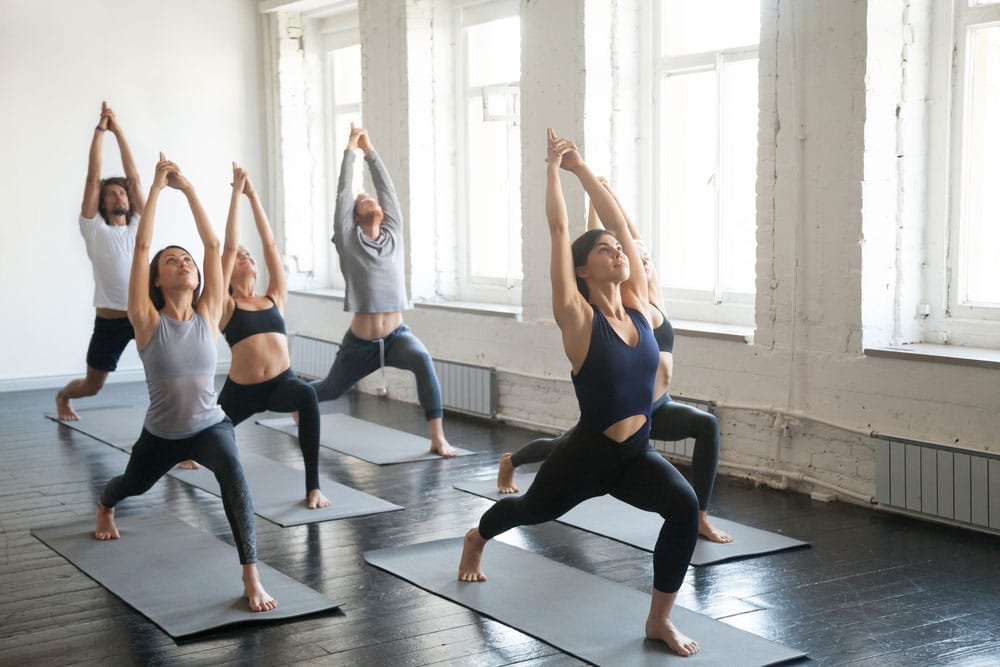
If you’ve frustratingly tried to book in for a Pilates workout class and been waitlisted for months, then you know just how crazy popular mobility and balance workouts are becoming.
Pilates and yoga workouts are currently all the rage and fall under the categories of mobility, flexibility and balance workouts. Yoga-type workouts focus on holding balancing postures, engaging your core strength and deep stretching to improve flexibility.
Pilates is a lot more focused on stability and balance. Pilates and associated exercises like reformer or Lagree method use mats or machines to help your engage your core and muscular strength to perform repetitive movements in a controlled manner that builds up your body’s stability.
Strength and Resistance
If you love to lift heavy stuff and put it back down, strength training is your best friend. Weight training with dumbbells, barbells or even resistance bands is the best way to increase your lean muscle mass. Resistance training is especially important as we age.
Not only does it make you look ultra buff, strength training also helps improve your bone density, which can help age-related conditions like osteoporosis.
Circuit Training
Circuit training refers to a style of training where you rotate through a series of exercises in repeated rounds, cycling through the full “circuit” several times to target different parts of the body.
Typically, these exercises are performed at a medium intensity, but you can do faster-paced or more intense circuits, as in a high intensity interval training (HIIT) workout.
Celebrity workouts like the Daniel Craig Workout or Tom Holland’s Spiderman Physique Workout incorporate elements of circuit training.
HIIT
High intensity interval training (HIIT) is built on short-duration exercises ranging from about 15-30 seconds. These activities are performed sequentially, usually with a short break in between each interval.
Some research indicates that the one of the effects of high-intensity interval training on exercise capacity and health may be that it is more enjoyable than moderate intensity continuous training (MICT). This may make it a preferable style of training for many.
You typically perform these exercises in several rounds, similar to circuit training. The aim of this training style is to elevate the heart rate for a serious burn. Usually HIIT exercises are explosive or plyometric moves like box jumps or medicine ball slams.
Cardio and Aerobics
Cardio means any type of exercise that gets your heart rate up, while aerobic exercise refers to exercise that oxygenates your body. Typically, these terms are used interchangeably, but are not exactly identical.
Practically, cardio exercise means anything from a brisk walk to a sprint. Some examples of steady state cardio include distance running, jumping rope, stationary or road biking and swimming. This type of exercise helps you burn more calories.
You can learn more by reading Aerobic vs anaerobic exercise training effects.
Calisthenics

This training style uses just your bodyweight as resistance to perform compound exercises like push-ups, pull-ups and chin-ups to strengthen the body.
Calisthenice workouts include exercises like L-sit progressions, muscle-up progressions, pistol squat progressions and more. If you want to work toward a male gymnast body, you’ll also need to perfect calisthenics moves like ring muscle-ups and parallel bar exercises, both of which are calisthenic.
This style of training is also known for high-rep range exercises. The Herschel Walker Workout, Charles Bronson Workout and the Charlie Hunnam Workout for instance, all consists of 100 push-ups a day or more, all focusing on high-rep calisthenics with only body weight.
One-Week Sample Workout
Here’s an example of a weeklong sample workout to try. You can use this simple workout guide if you’re a beginner or scale it up if you’re in the intermediate or advanced category to include higher reps and sets, more challenging exercise variations or longer workout duration.
Day 1 — Cardio Focus
- 30 minute run on treadmill or outside.
Day 2— Lower Body Strength
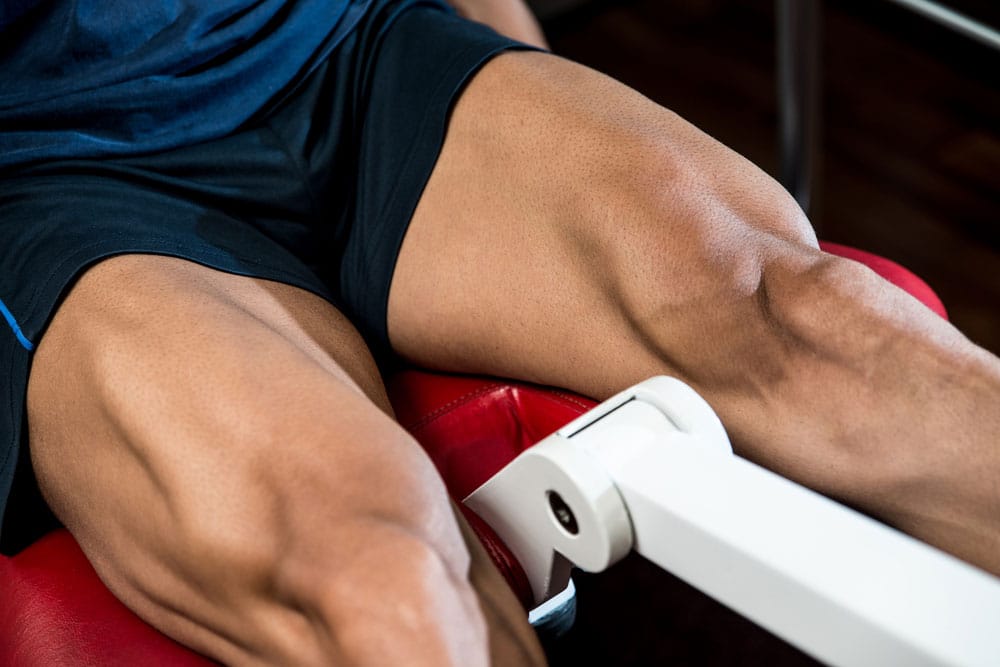
Barbell Back Squats: 4 sets x 8-10 reps. Bring a barbell to sit across your trapezius muscles (upper back). From here, lower your body by bending your knees and hips so your thighs drop parallel to the ground. Drive up through your heels to bring yourself back up, keeping your spine neutral, abs engaged and chest proud.
Romanian Deadlifts: 3 sets X 10-12 reps. Romanian deadlifts (RDLs) hit your hamstrings and glutes to help them grow. For an RDL, bring your feet hip-width apart, and hinge from your hips, sending your butt backwards.
Lower your barbell or dumbbells towards the ground, keeping your knees slightly bent. Make sure your torso stays straight as you drop and your abs are engaged. Come back up, squeezing your glutes as you hit the top of this move to return to the starting position.
Walking Lunges: 3 set X 12 reps per leg. Bring one leg forward and drop your body down until both knees bend to 90-degrees. Push out of your front foot to come to standing, then bring your back leg forward and repeat the movement, switching legs each time as you walk forward.
Leg Press: 3 sets X 12-15 reps. Sit on the leg press machine, using your leg press foot placement of choice. Push your weight away from you by extending your legs. Make sure they’re almost fully straight, but don’t lock out your knees. Slowly bend your knees back to 90-degrees to return your weight to the starting position.
Calf Raises 3 sets X 15-20 reps. Calf raises target the calf muscles (gastrocnemius and soleus), helping to improve calf strength and definition for better lower body aesthetics and functional movement. Standing with your feet hip-width apart and lifting your heels off the ground as high as they’ll go, squeezing your calves. Hold for a second then slowly lower back down.
Day 3 — Upper Body Strength

Barbell Bench Press: Sets: 4 Reps: 8-10. Lie on a flat bench with your feet planted firmly on the ground, grip the barbell slightly wider than shoulder-width apart, lower the bar to your chest, then press it back up explosively.
Pull-Ups: 3 set X 6-8 reps. Grab a pull-up bar with an overhand grip slightly wider than shoulder-width apart, hang with your arms fully extended, then pull yourself up until your chin clears the bar, lower yourself back down with control.
Dumbbell Shoulder Press: 3 sets X 10-12 reps. Sit on a bench with a back support, hold a dumbbell in each hand at shoulder height with palms facing forward, press the dumbbells overhead until arms are fully extended, then lower them back down to shoulder height.
Barbell Bent-Over Rows: 3 sets X 10-12 reps. Stand with your feet hip-width apart, grip a barbell with an overhand grip slightly wider than shoulder-width apart, hinge at the hips, keeping your back straight, pull the barbell towards your lower chest, then lower it back down with control.
Tricep Dips: 3 sets X 12-15 reps. Position yourself between parallel bars with arms fully extended and feet crossed behind you, lower your body by bending your elbows until your upper arms are parallel to the ground, then push yourself back up to the starting position by straightening your arms.
Day 4 — Active Rest Day
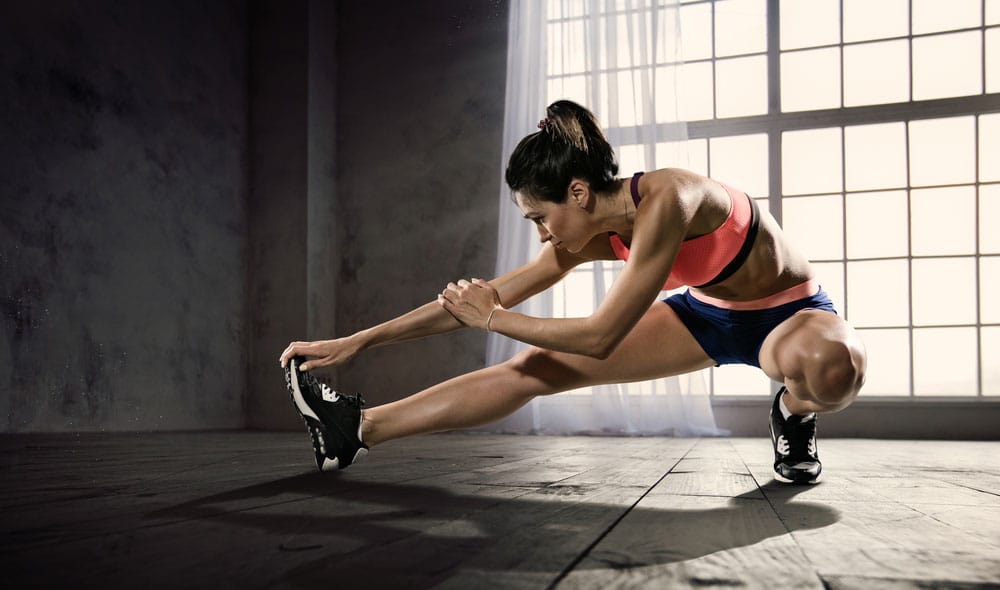
Active rest and recovery seem have effects on the body both when performed directly after an exercise session or at a later time. The positive and acute effects of active recovery may include some benefits to neuromuscular function and muscular contraction properties.
Active recovery can also be a way to help ward off delayed onset muscle soreness.
Walk: 30 minutes. Step into the great outdoors for a simple walk. Keep a comfortable pace. You can also take time to simply enjoy the scenery. It can also be fun to switch up your routes each time you walk so you don’t get bored. Focus on breathing and checking in with yourself and take the time to let those muscles recover from all the hard work you’ve taxed them with this week.
Yoga and Stretching: 20- 40 minutes. Pull up a gentle yoga flow on YouTube or get creative and put together a simple stretch routine to limber up your muscles. If nothing’s coming to you, you can simply lie on your back and stretch out your hamstrings, glutes, and hip flexors, along with any other muscles feeling tense from the week. Focus on breathing deeply and try to hold each stretch for at least 15-30 seconds. This is a good opportunity to work your flexibility and test mobility to make sure everything’s working as it should in your body.
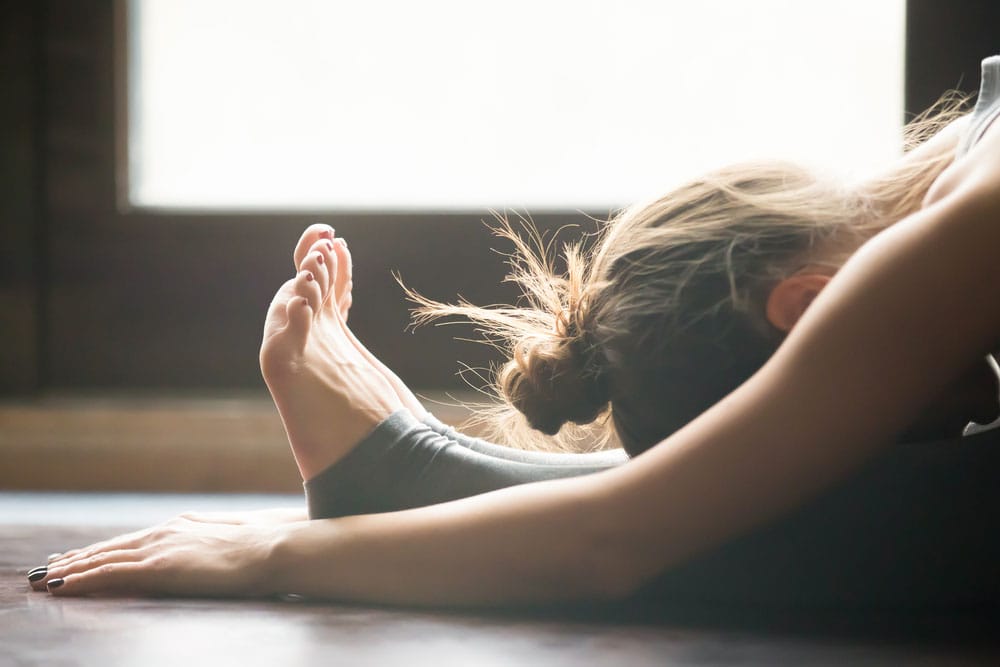
Day 5 — Lower Body
Step-Ups: 3 sets X 10-12 reps each leg. Grab a bench, step, or box that can hold your weight. Step up onto the bench with one foot, straightening the knee. Keep your other leg out as you step, then come back down onto the ground, dropping onto your extended leg. Continue for reps on one side, then switch legs. You can use weights if you want.
Glute Bridges: 3 sets X 12-15 reps. Lie down and bend your knees, planting your feet flat on the floor. Drive through your heelps and lift your hips towards the ceiling, squeezing your butt and extending the hips at the top of the move. Slowly lower with control.
Side Lunges: 3 X 10-12 reps each leg. Bring your feet shoulder-width apart and lunge out to take a wide step to the side with one leg. Drop your body, bending into that knee but keeping your other leg straight. Make sure you keep your body upright and that your knees tracking over the toe of your bent lefg. Push off your lunging leg to come back up, then switch sides. You can finish reps on one side and then the other or alternate each lunge.
Wall Sit: 3 sets X 30-90 seconds. Lean against a with your back and slide down so your thighs come to a parallel position with the ground. Your knees should be bending here at 90 degrees. Hold this position until your legs feel like they’re going to fall off. Keep the abs working and make sure your back doesn’t lift off the wall for proper form.
Day 6— Upper Body: Abs
Push-Ups: 4 sets X 10-12 reps. From a plank position, drop your body down, lowering it until your chest nearly touches the ground. Use your strength to push yourself back up. Keep your abd working the whole time and make sure not to pike your hips up or let them sag down.
Bent-Over Rows: 3 sets X 8-10 reps. Standing with your feet hip-width apart and holding a barbell, hinge from your hips to lean forward, so your barbell hovers just in front of your shins. Pull the barbell in towards the bottom of your ribcage, engaging your shoulder blades, then bring it back down.
Shoulder Press: 3 sets X 10-12 reps. Sit on a weight bench with a dumbbell in each hand at shoulder height. You can also work this move standing with your feet hip-width apart. Face your palms forward then press your dumbbells overhead so your arms come to straighted. Hold for a moment then lower back to your shoulders.
Russian Twists: 3 sets X 12-15 reps per side. Try Russian twists to make your waist smaller. Sit on the ground or a yoga mat and bend your knees, lifting your feet off the ground. With a weight or medicine ball in your hands, twist from the waist right and then left. Make sure your engage your core the whole time.
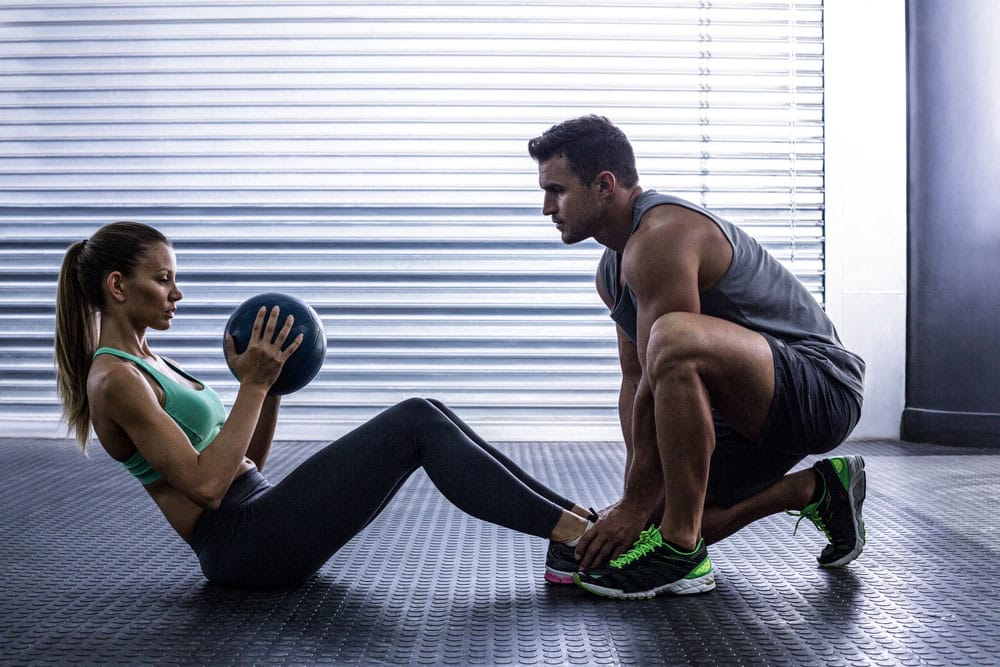
Plank: 3 X 30 seconds or as long as possible. Come to a high plank position with your shoulders directly over your wrists. Engage your abs to keep your body in a totally straight line. Hold this position, making sure to keep breathing the whole time.
For more bodyweight ab options, check out these companion articles:
Day 7— Rest Day
- This is a day where you should feel free to completely skip the gym! Take some time for mindfulness activities, including meditation. If you really can’t sit still, taking a simple walk or doing a “fun exercise” like leisurely roller skating instead of a gruelling workout are okay if you’re feeling up to it. The goal here is to listen to your body but force yourself to get in some downtime.
What is the Best Workout Schedule?
The option above is just one way to schedule your weekly workout routine.
Breaking exercises down between training the upper and lower body will let you rest each muscle group so you can train them multiple times per week.
Can you do full body workouts every day? If you find that your schedule changes frequently or you’re not so great with committing certain days to certain exercises each week, full body exercises may be a better option for you.
Why?
Think about it. If you only decide to workout on days 1, 2, and 5, you’ll have almost entirely skipped strength training for your upper body! Talk about a missed opportunity to make some serious gains.
Although splits like the one described above can be helpful if you want to give specific muscle groups time to recover, it’s not helpful if you routinely skip certain days of the week.
In this case, you’ll want to think about doing full body days instead. A split including 3-4 full body workouts with 3-4 days of rest can be an option if you have a more demanding schedule too!
That way, you make sure not to skip any major muscle groups so you get balanced, aesthetic workouts that will help all your muscles grow at an even pace.
The Takeaway
Planning a solid workout routine is the best way to make sure you stay committed, consistent and engaged in the gym.
The “best workout routine” looks different for everyone.
Ultimately, what’s best for you is something you’ll actually do and stick to. You could be a Pilates lover, but your best friend may love the weight room. There’s nothing wrong with not doing workouts that you dislike just because they’re hyped up.
Pick a workout routine that works for you and suits your schedule. This way, you’re not dreading every workout and it’s more likely that you’ll actually commit the time it takes to get stronger.
Remember, one AMAZING workout each month is far less beneficial than 3 good-but-simple workouts a week that you know you can commit to, in terms of making long term progress.
Aim for an exercise routine long term and you're sure to see muscle growth and health benefits at any fitness level. Make sure you pick something that is sustainable for a long period of time to avoid risk of injury. For instance, exercises with a reasonable number of repetition and someone to guide or spot you if you're lifting heavier weight.
Stick with what you like and what you know you’ll do and you should be making progress in no time.
References
Akagi, R., Imaizumi, N., Sato, S., Hirata, N., Tanimoto, H., & Hirata, K. (2020). Active recovery has a positive and acute effect on recovery from fatigue induced by repeated maximal voluntary contractions of the plantar flexors. Journal of Electromyography and Kinesiology, 102384. https://doi.org/10.1016/j.jelekin.2019.102384
Atakan, M. M., Li, Y., Koşar, Ş. N., Turnagöl, H. H., & Yan, X. (2021). Evidence-Based Effects of High-Intensity Interval Training on Exercise Capacity and Health: A Review with Historical Perspective. International journal of environmental research and public health, 18(13), 7201. https://doi.org/10.3390/ijerph18137201
Cheung, K., Hume, P., & Maxwell, L. (2003). Delayed onset muscle soreness : treatment strategies and performance factors. Sports medicine (Auckland, N.Z.), 33(2), 145–164. https://doi.org/10.2165/00007256-200333020-00005
Doğan C. (2015). Training at the Gym, Training for Life: Creating Better Versions of the Self Through Exercise. Europe's journal of psychology, 11(3), 442–458. https://doi.org/10.5964/ejop.v11i3.951
Patel, H., Alkhawam, H., Madanieh, R., Shah, N., Kosmas, C. E., & Vittorio, T. J. (2017). Aerobic vs anaerobic exercise training effects on the cardiovascular system. World journal of cardiology, 9(2), 134–138. https://doi.org/10.4330/wjc.v9.i2.134
Related articles


Get fit with Flex
Build muscle & lose weight fast for free.
Available on iPhone + Apple Watch
